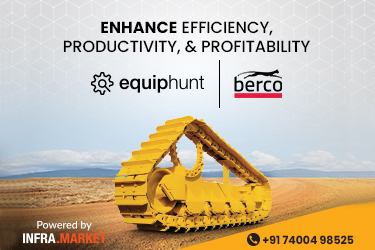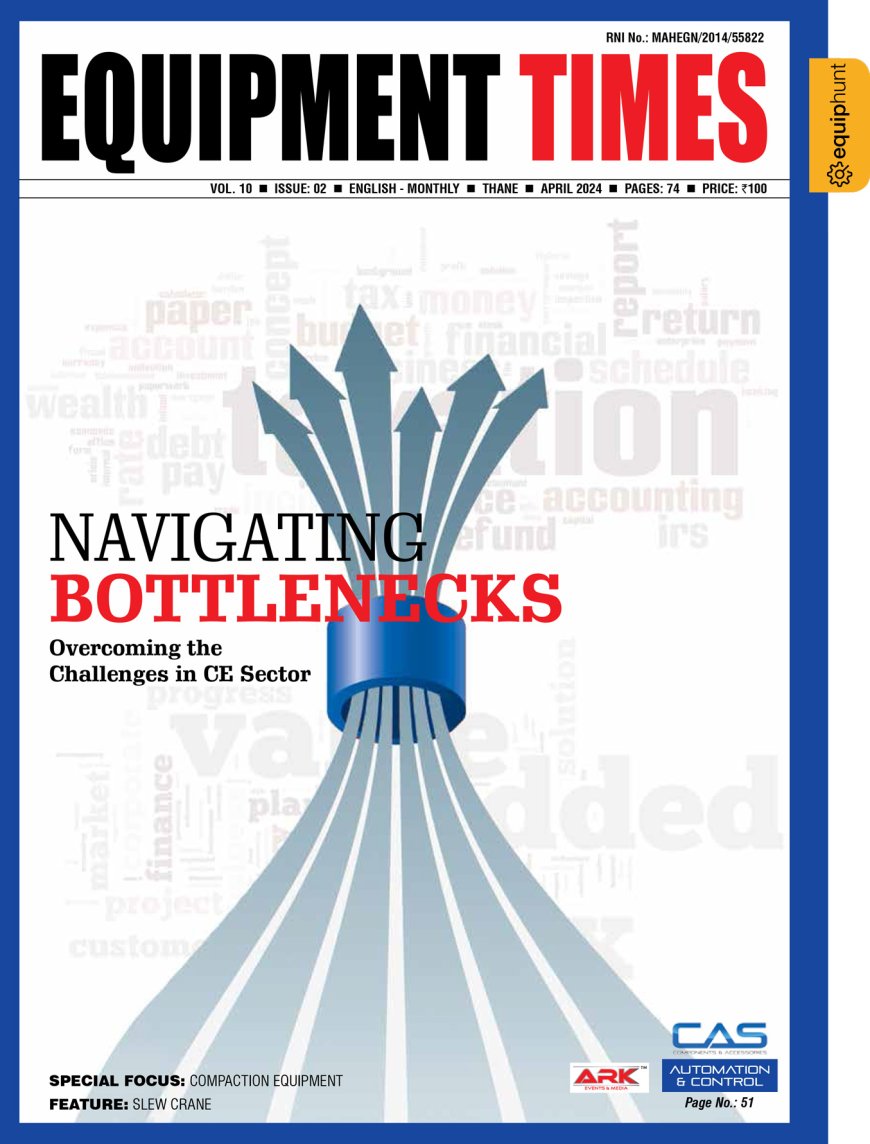We are scaling up our asset-centric risk approach to cover multi-dimensional risks.
The clear market differentiator for SEFL has been its holistic approach in providing end-to-end solutions that cover the entire value chain in the equipment life cycle. DK Vyas, CEO, Srei Equipment Finance Limited. Srei Equipment Finance Limited (SEFL), with
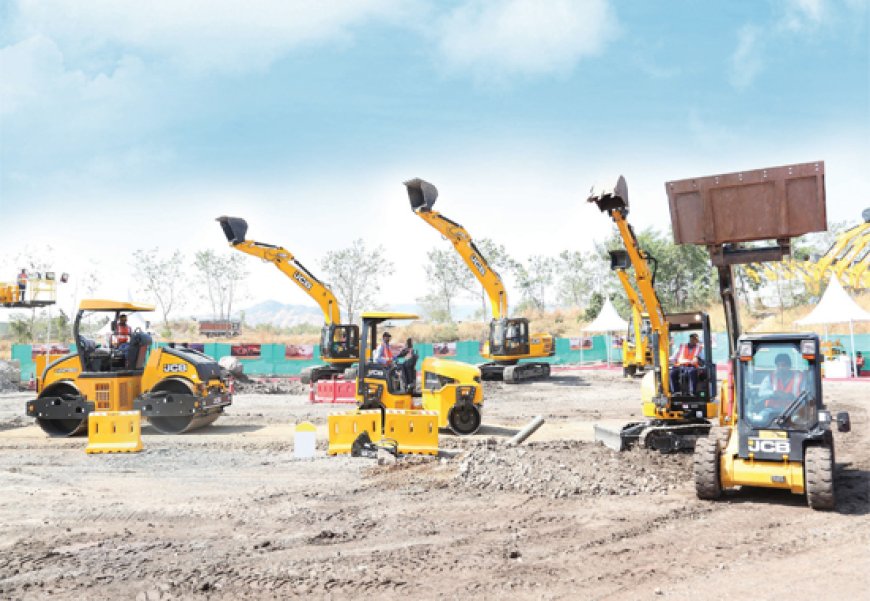
The clear market differentiator for SEFL has been its holistic approach in providing end-to-end solutions that cover the entire value chain in the equipment life cycle.
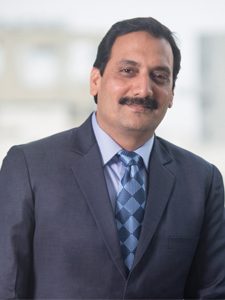 DK Vyas,
DK Vyas,
CEO,
Srei Equipment Finance Limited.
Srei Equipment Finance Limited (SEFL), with the total disbursement of Rs. 169,895.7 million in FY’18, continues to be a dominant financer in the CME market. Feedback Consulting reports that SEFL was a leading financier in the CME sector in India, with an approximately 33% market share in FY’18. Its partnerships with OEMs are the most distinguishing aspect of its equipment-centric business model. “Supported by our holistic equipment financing solutions approach, our customer-focused approach has helped us retain our customers as their business has grown in size as well as expand our customer base through their referrals,” states DK Vyas, CEO Srei Equipment Finance Limited. In an exclusive interview with EQUIPMENT TIMES, Vyas sheds light on the CME financing segments and the changing trends.
The boom in the infrastructure spending has brought a significant turnaround for the infrastructure equipment sector. What has been the growth trajectory for construction equipment industry for the last couple years and what is the expected growth?
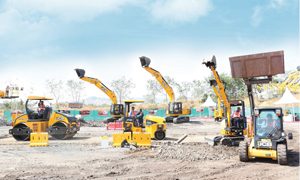 The Infrastructure sector is a key driver for the Indian economy and is largely responsible for propelling India’s overall development. The government is focused on initiating policies to ensure the creation of a world class infrastructure in India. According to the Department of Industrial Policy and Promotion, FDI received in the infrastructure development sector townships, housing, built up infrastructure and construction development projects) from April 2000 to March 2018 stood at INR 1,961 billion. As per the Union budget for FY 2018-19, the total estimated capital expenditure towards infrastructure sector stood at INR 5.97 trillion of which the majority of the increased allocation is towards areas such as railways (increase by ~22% y-o-y) and roads and highways (increase by 10% y-o-y). This increased allocation is expected to have a positive impact on the construction, mining and allied equipment (CME) sector.
The Infrastructure sector is a key driver for the Indian economy and is largely responsible for propelling India’s overall development. The government is focused on initiating policies to ensure the creation of a world class infrastructure in India. According to the Department of Industrial Policy and Promotion, FDI received in the infrastructure development sector townships, housing, built up infrastructure and construction development projects) from April 2000 to March 2018 stood at INR 1,961 billion. As per the Union budget for FY 2018-19, the total estimated capital expenditure towards infrastructure sector stood at INR 5.97 trillion of which the majority of the increased allocation is towards areas such as railways (increase by ~22% y-o-y) and roads and highways (increase by 10% y-o-y). This increased allocation is expected to have a positive impact on the construction, mining and allied equipment (CME) sector.
According to a report by Feedback Consulting, CME industry has witnessed a good revival since FY 2015-16, preceded by a decline in the previous three years. CME industry which grew by upwards of 20% in FY’18 (101,900 units) compared to FY’17 (83,600 units) in terms of unit sales and is expected to see heightened business activities as the government is likely to invest heavily in infrastructure sector thereby lifting business prospects in construction equipment sector. Demand for infrastructure equipment is expected to multiply as a result of all these. The CME industry is to grow at a CAGR of 14-15% for next three years until Fiscal 2021 to reach a volume of more 153,000 units.
What has been the impact of the growth scenario on equipment finance segment?
Increase in construction equipment demand is likely to result in increased demand for financing of such assets. According to a report by Feedback Consulting, the construction equipment finance industry is expected to grow at a CAGR of 20-21% for the next three years until Fiscal 2021. With the current announced projects which mostly have started from the third quarter of Fiscal 2018, demand will continue for the earthmoving equipment industry, which will have a share between 68-70% of the overall CME finance market. With GST unifying the Indian market, inter-state mobility of these assets is no longer a problem. Thus, this is the ideal time to promote cost-effective methods of utilisation of these assets like renting and leasing. Banks and NBFCs are expected to have an equal share in the CME finance industry for the next one to two years with the equipment leasing industry expected to grow at a CAGR of 15-16% until Fiscal 2020.
What are the upcoming trends in CEF?
Going forward, revolutionary trends appear to be emerging in the equipment financing sector. There is likely to be increased presence of integrated offerings wherein dealers and original equipment manufacturers (OEMs) are expected to offer customers integrated choice which will include the equipment finance (and could also cover the life cycle financing of the equipment). Currently, equipment financing takes anywhere between 5-30 days before the machine is handed over to the customer. Equipment financing companies need to move to the automation route, to sustain and survive in this technology-led market. A major differentiator could be transparency with a process to manage documentation, including, for example, EMI payments. Further, at present, there are few companies which provide a platform for equipment owners and customers to interact and avail of equipment services. This could be a good opportunity for finance companies to participate and ensure that all finance needs are met. Lastly, managed services are another area that is emerging. Customer demand for greater flexibility and convenience will augment the use of non-standard financing agreements. Shifts in customer preference for managed services (bundling equipment, services, supplies and software), pay-per-use leases and alternative financing will encourage equipment finance companies to find innovative ways to meet the demand.
Tell us about SREI Equipment Finance’s performance through
2017-18.
Srei Equipment Finance Limited (SEFL), with the total disbursement of Rs. 169,895.7 million in FY’18, continues to be a dominant financer in the CME market. Feedback Consulting reports that SEFL was a leading financier in the CME sector in India, with an approximately 33% market share in FY’18.
In FY’18, the company saw a marked improvement in its financial performance. Buoyed by a rejuvenated infrastructure segment, the total Asset under Management (AUM) grew to Rs. 300,727.7 million, representing a 41.6% growth over last year. The Gross Non-Performing Assets (GNPA) reduced from 2.5% in 2016-17 to 1.8% in 2017-18, while the Net Non-Performing Assets have reduced from 1.8% in 2016-17 to 1.3% in 2017-18. The Capital Adequacy Ratio (CAR) remained compliant at 15.9%. The profit before tax grew to Rs. 394.41 crores in FY’18 from Rs. 216.42 crores in 2016-17.
The improved financial performance is a result of SEFL’s continued inroads into newer asset classes and lifecycle solutions that provides customer value and investment in technology which benefits its service delivery, customer experience, and risk prognosis.
What is the scenario regarding used equipment financing?
The market for used equipment is highly unorganised. New projects have attracted the interest of construction business owners wishing to purchase new or used equipment and who seek to be compliant with the government requirements for project tenders.
According to Feedback Consulting, in Fiscal 2018, the market for organised used equipment financing is estimated to be approximately 9-10% of the overall disbursements by finance companies in the CME segment. This figure does not account for cash transactions and the market catered for by private financiers (which are mostly unorganised). In Fiscal 2018, the current value of the organised used equipment financing accounts for roughly INR 35-40 billion. The unorganised component or finance could account for an additional INR 10-15 billion. The market is dominated by products such as backhoe loaders, hydraulic excavators, pick and carry cranes, accounting for more than 70% of the used equipment market. Companies have also engaged in the direct import of equipment from countries such as China and Japan. However, OEMs have urged the government to regulate the import of used equipment.
Growth opportunities for the used equipment include increasing awareness among customers on the value of ‘used equipment’ to reduce capital expenditure investments, online portal which helps facilitate used equipment business, technology intervention like telematics which helps in identifying the accurate working and operation conditions of the machine and financiers can come up with operating lease products in used CME with resale valuation framework developed by industry body and with good service support from the OEM/dealer.
What differentiates SREI? What can one expect from SEFL in terms of its plans and business strategy?
The clear market differentiator for SEFL has been its holistic approach in providing end-to-end solutions that cover the entire value chain in the equipment life cycle that includes equipment procurement, deployment, maintenance, second life financing, and exit stages. Our partnerships with OEMs are the most distinguishing aspect of our equipment-centric business model. These include various arrangements such as general associations, preferred financier associations and private label associations. Our customer-focused approach also has contributed to our success. We cater to a wide range of customers, from ‘First Time Users’ and ‘First Time Buyers” to fleet owners and mid-size contractors to large corporations and project owners. Supported by our holistic equipment financing solutions approach, our customer-focused approach has helped us retain our customers as their business has grown in size as well as expand our customer base through their referrals.
Our years of experience in the equipment financing business have provided us with deep insight into various equipment categories, diverse geographies and multiple customer segments. Our risk assessment framework and credit appraisal policies are an outcome of this experience, which we have progressively institutionalised. As we continue to diversify our customer exposures, we are scaling up our asset-centric risk approach to cover multi-dimensional risks. We increasingly manage risk by deploying technology including real time equipment location identification through GPS/ GPRS devices, use of handheld devices by field personnel, customer service through online portals, mobile applications and customised risk prognosis tools.
We have experienced steady growth recently. Our growth strategy primarily includes consolidating our equipment financing business through strategic business alliances and marketing initiatives, continuing to expand and diversify our product portfolio, growing our operations and network across India, and expanding our customer base across various business verticals in India. In addition to providing CME financing, as part of our growth strategy, we intend to continue to expand our operations in other business verticals as well. We plan to enter into partnerships with new OEMs and vendors and expand in equipment categories and business verticals with attractive growth opportunities. We aim to strengthen our relationships with OEMs by increasing original spare part sales. This will also help in the upkeep of our funded equipment. We also plan to partner with OEMs and dealers for financing refurbished assets. We are continuously attempting to optimize borrowings and explore alternate avenues of funding. The company is open to adopting newer technologies to achieve greater operational efficiency and advanced risk management processes.
Give us a sense of what you have in mind in respect of baumaConexpo 2018. Any special schemes/launch at the event?
Events like Bauma serve as confluence ground for all industry participants – manufacturers, customers, financiers and regulators. It provides us a perfect platform to meet our key stakeholders and understand their needs. We are optimistic about heightened retail and SME buying during the event and hope to generate a lot of enquiries and eventual business during and after the event.
As always SEFL will have a big presence at the exhibition with its stall (Stall no. O.F35) in outdoor pavilion of about 2,315 sq. ft. Our patrons can experience technological innovation in equipment financing, online gateway for purchase of both new and used equipment, audio-visual and interactive information systems, and fun and engaging activities at our stall.
With our attractive offerings and strategic tie-ups with our manufacturer partners, we hope to provide financing solutions for quite a large number of equipment.
For this edition of BaumaConexpo, we have tied up with our manufacturers’ partners to offer exciting schemes and solutions for our customers covering the entire asset life-cycle. Our offerings include:
- Leasing solutions: Our rental products offer customers with the ‘Right to Use’ the equipment against periodic rentals for agreed period of time. These rental levels are significantly lower and attractive compared to vanilla loan products and are bundled with attractive terms like Free Insurance for full tenure, lower margins etc.
- Customised financing solutions: Enriching the customer with better cash flows, extended facility tenure; backed by simple documentation and quick processing time.
- Loyalty schemes: Loyalty schemes wherein customer can avail additional loan facility, based on past track record, as a top-up funding limit or to buy an equipment from select OEMs.
- Online financing solutions: Our customers can also experience technological innovations in equipment purchase and finance through online portal partner – iQuippo through which they can not only view, decide and purchase equipment at attractive terms but also avail easy finance from different financing partners of iQuippo at
one stop.
Hits: 106





